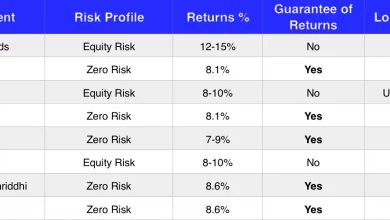Common Stocks and Uncommon Profits: Book Review

Hello investors and readers, and welcome to today’s book review on Common Stocks and uncommon profits by Philip A. Fisher. The book was first published in 1958, making it a classic. Before writing Common Stocks and Uncommon profits, Fisher managed funds for different investors. In that period, he received a lot of questions from big and small investors inquiring how they could embark on a successful journey to investing. That is when he decided to write the book as a source of knowledge for people seeking investing knowledge. Before we delve into the book review, here is some info on the author.
About The Author
Philip Fisher was a renowned investor of his time. His investment journey kicked off in 1928 after he dropped out of Stanford business school to take a job as a securities analyst. Shortly after, Fisher started his own company in 1931, where he worked until he was 91 years old. Apart from being an investment guru, he also greatly influenced Warren Buffet, one of the wealthiest people to walk this planet. With that background in mind, let’s start the book review.
Philip Fisher talks about the fundamental principles of investing, including what to buy, when to buy, and when to sell, which he says is never. Here is a summary of each chapter and the book review.
Chapter 1 and 2
In the first chapter, the author talks of the main reason people go into investing and, specifically, the stock market; to make money. There are two approaches to accumulating money; timing the market so you can buy when the stocks are cheap and selling when the prices go up, and the second is to hold stocks from outstanding companies. According to Philip Fisher, the latter is better.
In the second chapter, he introduces the “Scuttlebutt” method, which gathers info about a company by talking to those associated with it. This could include its competitors, customers, vendors, name it. Once you have gathered such information, the company’s value should become clear even for an intermediate investor.
Chapter 3 and 4
Fisher provides 15 points that a stock should meet before investing. Some of the points provided in the book include;
- A long-term horizon, as opposed to a short term one, is more favorable.
- Depth to the company’s management.
- The company’s profit margins and what the company is doing to maintain them.
- Labor, personnel and executive relations the company has.
- Products or services provided by the company and whether they have the potential for an increase in sales for several years.
- The company’s management integrity and whether they talk freely with management.
Fisher is also keen to remind company management that the book’s aim is not to establish a quantitative criterion. He proposes that the Scuttlebutt method is the most practical method to determine when to invest.
The author talks about what to buy. He argues that investors don’t invest time in doing their due diligence, which results in misunderstandings and, therefore, poor investments. He goes ahead to advise that an investor should devote time to find stocks with high profits compared to risk. Finally, he suggests that investors with limited time, skill or inclination should engage the services of an expert for guidance.
Chapter 5 and 6
Fisher focuses on the importance of time in investing. While buying the best stocks ensures you optimize profits, timing is everything. While the conventional approach is based on anticipated interest rates, the author advises that the best time is when a company is experiencing temporary problems. You should be able to verify that these problems will only go on in the short run lest you stand to lose profits forever.
On whether an investor should focus on the level of the stock market or individual stock pick, Fisher Philip recommends that one focuses on the latter except on the rare event such as the great depression is looming. His advice is that it’s better to invest based on information about a company rather than speculation of the market level or interest rate. Another reason is that if the stock pick was done well, the losses resulting in the fall in price would not be as severe.
He then discusses when an investor should sell his stock and when not to. According to him, there are only 3 reasons to sell; if an investor made a mistake and the stocks are not as attractive as earlier anticipated, if the stock fails to meet the investment objective and finally makes a better investment. He says that the better you correct your mistakes, the better. He discourages selling for reasons he regularly hears; a declining market, overvalued stock, and a surge in price. He argues that stocks are always valued at current prices and not on whether the current price is higher than the selling price.
Chapter 7 and 8
Philip Fisher talks about dividends and 5 don’ts for investors in these chapters. On dividends, he argues that where the capital will be reinvested is more important than high dividends. He further argues that an investor needs to consider the regularity of dividends. Outstanding companies have a specific payout ratio though an investor will be vulnerable to fluctuations in the company’s income. An investor should seek a company with a steady dividend paid out regularly.
The five don’ts are pretty straightforward. Fisher cautions against purchasing stocks of a promotional company (one with little or no turnover) because they cannot carry out a solid analysis of its performance. Secondly, he cautions investors not to disregard stocks traded over the counter. Another don’t is for people not to buy stocks based on the annual report as it’s geared to create an excellent image to the general public.
He also draws attention to the fact that a company will now be valued at a higher price-to-earnings ratio than in the future, meaning it should not be a basis for buying stocks. Finally, one should not wait with the hope that the price of a stock will fall. As long as it’s well priced, an investor should buy it immediately.
In the following two chapters, he talks about more don’ts and how an investor can eventually navigate finding a growth stock. The last chapter is a one-page summary of ideas shared throughout the book. He concludes by reminding readers that in investing generally, a sound nervous system is more important than a working head.
Is Common Stocks and Uncommon Profits a Good Book?
I recommend this read for anyone looking to invest in individual companies. Fisher Philip has a way of narrowing down concepts into easily understandable bits. It’s, however, important to invest that each investor is different. In his book, Fisher recommends that it’s best that an investor holds at most 20 stocks in a portfolio, but there are successful investors with more than that. The investing journey is different for everyone, meaning it’s not a one-size-fits-all situation.
After reading this book review, if you are interested in the book, you can find it online in any format of choice, in a public library near you or purchase it on amazon.




